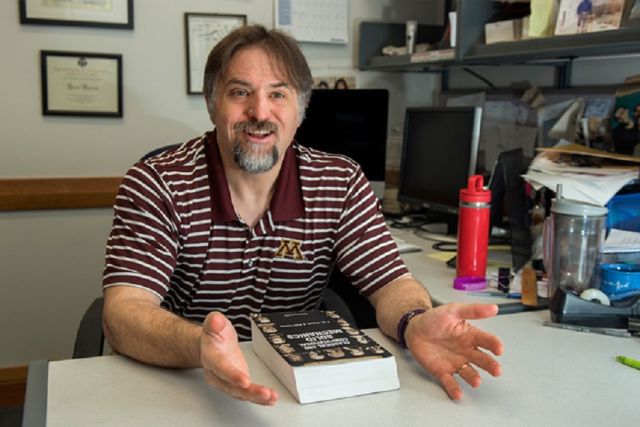Victor Barocas, Ph.D. Professor, University of Minnesota, Computer Modeling of Growth, Remodeling, and Failure of Ascending Thoracic Aortic Aneurysm

Seminar
This BIOE 225 Seminar will be hosted in person.
Speaker:
Victor Barocas, Ph.D.
Professor
Department of Biomedical Engnineering
University of Minnesota
Faculty Host
Ryan Stowers
Computer Modeling of Growth, Remodeling, and Failure of Ascending Thoracic Aortic Aneurysm
Abstract:
Ascending thoracic aortic aneurysm (ATAA) presents a major challenge to clinicians. ATAAs are often harmless, and the repair surgery is costly and potentially dangerous; on the other hand, if an unrepaired ATAA ruptures, the consequences for the patient can be dire. What we need, then, are better tools to predict whether a given aneurysm is at high risk of rupture. This problem is an extremely complex one for a number of reasons. Perhaps most obviously, one cannot do a failure test to assess the strength of the tissue while it is still in the patient. Further, we not only need to know the risk to the patient now, but we also need to know the risk to the patient in the future, so tools to predict the evolution of the aneurysm over time are essential. Finally, the changes that occur in the vessel are of mechanical consequence, but they are different by complex biological processes that involve mechanics, chemistry, and biology. Our group is using a combination of theoretical and experimental techniques to develop new models of tissue growth, remodeling, and failure, with the goal of understanding the process and eventually making better predictions of patient risk. The seminar will discuss our work on fluid-solid coupling, multi-scale tissue remodeling, and tissue failure.
Bio:
Victor Barocas is a Professor of Biomedical Engineering at the University of Minnesota. His research focuses on soft-tissue biomechanics, with an emphasis on multiscale models and novel characterization experiments, with application in a wide variety of physiological systems over the years. Current focus is on cardiovascular and musculoskeletal tissues, and on tissue growth, remodeling, and failure. He is a College of Science and Engineering Distinguished Professor and a member of the University of Minnesota's Academy of Distinguished Teachers, and he is a Fellow of the Biomedical Engineering Society and of the American Society of Mechanical Engineers (ASME). From 2011-2021 he served as a co-Editor-in-Chief of the ASME Journal of Biomechanical Engineering.